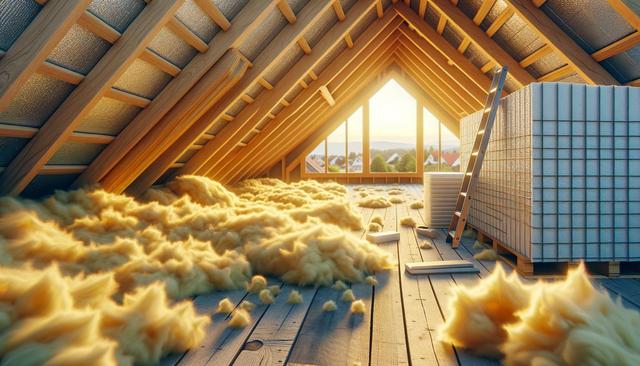Understanding the Importance of Attic Insulation
Attic insulation plays a crucial role in regulating your home’s temperature. Without it, a significant amount of heat can escape during the winter or enter during the summer, leading to higher energy costs. Proper attic insulation acts as a barrier, minimizing the exchange of heat between your living space and the outside environment. This not only contributes to a more stable indoor climate but also helps reduce the strain on your heating and cooling systems.
By insulating your attic, you can enjoy several benefits, such as:
- Lower energy bills due to improved thermal efficiency
- Enhanced indoor comfort throughout the year
- Prolonged lifespan of your HVAC equipment
- Reduced carbon footprint
Whether you are building a new home or upgrading an older one, investing in high-quality attic insulation is a smart, long-term decision.
What Is Foam Insulation and How Does It Work?
Foam insulation is a modern solution to traditional insulation methods, offering superior performance in sealing gaps and preventing air leaks. It is most commonly available in two forms: open-cell and closed-cell. Both types expand upon application, filling cavities and hard-to-reach areas more effectively than traditional materials like fiberglass or cellulose.
Foam insulation offers distinct advantages:
- Excellent air sealing capabilities
- High thermal resistance (R-value)
- Moisture resistance, helping prevent mold growth
- Long-lasting performance without settling over time
This type of insulation is especially effective in spaces like attics, where irregular framing and tight corners can make installation of other types more difficult. Foam insulation’s ability to create a continuous thermal barrier makes it a favored choice for homeowners seeking long-term energy savings.
Comparing Foam Insulation with Other Insulation Types
When considering attic insulation, it’s important to compare different materials to make an informed choice. Traditional options like fiberglass and cellulose have been used for decades, but foam insulation offers several advantages that are difficult to match. For instance, while fiberglass batts can leave gaps and are susceptible to air movement, foam insulation provides a seamless application that adheres directly to surfaces.
Here’s a quick comparison of common insulation types:
- Fiberglass: Affordable but can lose effectiveness if compressed or poorly installed
- Cellulose: Eco-friendly and good at filling gaps, but can settle over time
- Foam Insulation: High R-value, durable, and excellent air sealing
Each material has its place, but for homeowners focusing on energy efficiency and long-term value, foam insulation stands out as a reliable and effective solution.
Installation Considerations for Attic Foam Insulation
Installing foam insulation in your attic requires careful planning and professional expertise. Unlike some other materials that can be easily DIY-ed, foam insulation involves specialized equipment and safety precautions. The application process involves spraying the foam into the desired areas, where it then expands and hardens, forming a tight thermal seal.
Key factors to consider before installation include:
- Assessing ventilation needs to prevent moisture buildup
- Ensuring proper sealing of all attic openings
- Choosing between open-cell and closed-cell foam based on climate and moisture levels
- Hiring experienced professionals familiar with building codes and safety standards
Proper installation is critical to achieving the full benefits of foam insulation. A well-insulated attic not only improves your home’s energy efficiency but also contributes to a healthier indoor environment by reducing drafts and potential allergens.
Long-Term Benefits and Maintenance
One of the biggest advantages of using foam insulation in your attic is its durability. Once installed, it typically lasts the lifetime of your home with minimal maintenance. Unlike other materials that may degrade or settle over time, foam insulation maintains its shape and effectiveness, providing consistent thermal performance year after year.
Long-term benefits include:
- Reduced energy consumption and utility bills
- Better indoor air quality through reduced air infiltration
- Increased property value due to improved energy efficiency
- Lower maintenance needs for HVAC systems
Routine inspections of your attic can help ensure that the insulation remains intact and effective. While foam insulation is known for its resilience, it’s still wise to check for potential issues like pest intrusion or water damage during seasonal home maintenance routines.
Conclusion: Making the Right Insulation Choice
Choosing the right attic insulation is an essential step toward improving your home’s energy performance and comfort. Foam insulation offers a modern, efficient, and durable solution that adapts well to the unique challenges of attic spaces. By understanding its benefits and installation requirements, homeowners can make informed decisions that lead to long-term savings and a more comfortable living environment. Whether you’re upgrading an existing home or planning a new build, installing quality attic insulation using foam materials can be a valuable investment for years to come.








